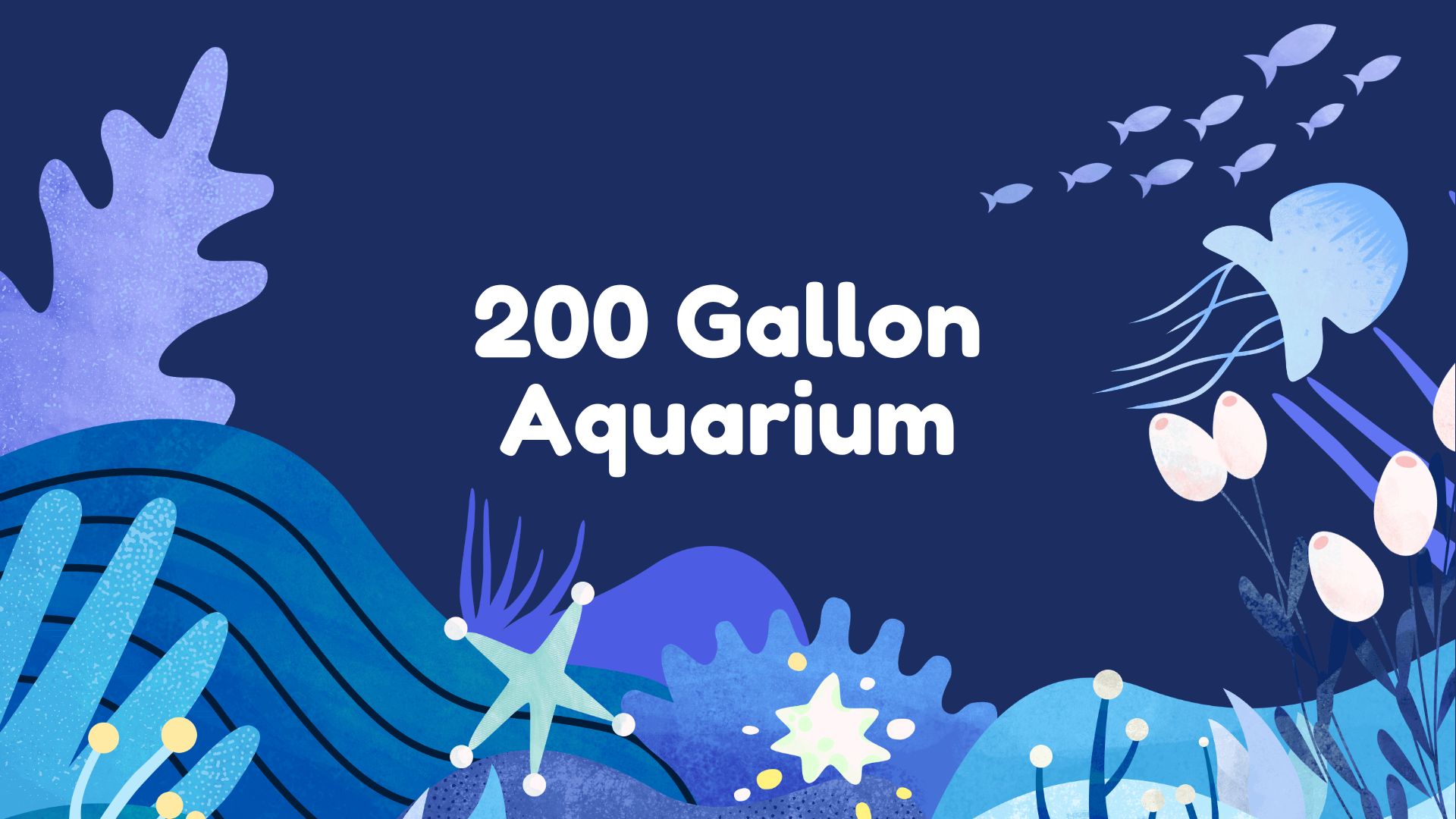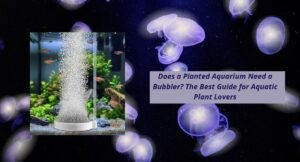A 200 gallon aquarium offers a vast space for aquatic life, making it a popular choice among serious fish keepers.
Investing in a tank of this size allows for a diverse range of fish species and creates an engaging underwater ecosystem.
Proper management of such a tank can result in a stunning focal point for any room.

Setting up a 200 gallon aquarium involves careful consideration of tank dimensions, filtration systems, and lighting options.
Purchasing from reliable sources can help ensure that the aquarium meets specific needs.
With the right setup, this size tank can thrive, providing enjoyment for both the owner and the fish.
Whether considering a freshwater setup or a saltwater reef, a 200 gallon aquarium presents unique challenges and rewards.
Interested aquarists will find abundant opportunities to enhance their skills and knowledge while creating a vibrant underwater world.
Contents
Table of Contents
Understanding Aquarium Sizes

Aquarium sizes vary greatly, impacting how many fish they can hold and the type of setup needed. Understanding these dimensions helps in making informed choices about selecting the right aquarium for specific needs.
Comparing Aquarium Capacities
Aquarium capacities are typically measured in gallons. A 200 gallon aquarium provides a large space for aquatic life, allowing for diverse species and more intricate habitats.
This size can effectively accommodate fish, plants, and decorations without overcrowding.
For example, the weight of a full 200 gallon aquarium can exceed 1,800 pounds. This weight includes water, the tank structure, substrate, and decorations. Understanding this total is crucial for choosing a suitable location.
Here’s a quick comparison of common aquarium sizes:
| Size (Gallons) | Dimensions (Inches) | Best for |
|---|---|---|
| 75 | 48 x 18 x 21 | Medium fish |
| 125 | 72 x 18 x 21 | Larger fish |
| 200 | 96 x 25 x 20 | Community tanks |
Space Requirements for a 200 Gallon Aquarium
A 200 gallon aquarium requires ample space. It should be placed on a reinforced stand that supports its weight and dimensions.
Clearance around the tank for maintenance and equipment is also important.
When looking for a suitable area, consider the following:
- Floor Strength: The flooring should be sturdy enough to handle the weight.
- Accessibility: There should be easy access for cleaning and feeding.
- Lighting: Ensure sufficient light for both the aquarium and the surrounding area.
The ideal location often measures at least 96 x 25 inches to accommodate the tank properly. Planning for additional room strengthens the overall fish tank experience, supporting both the aquatic environment and the owner’s enjoyment.
200 Gallon Aquarium Dimensions

Understanding the dimensions of a 200-gallon aquarium is essential for anyone considering this size tank. Different designs can affect space and aesthetics in a home or office.
Standard Dimensions
A standard 200-gallon aquarium typically features dimensions that maximize both volume and practicality. Common dimensions include:
- Length: 96 inches
- Width: 25 inches
- Height: 20 inches
These dimensions provide a wide surface area, which is beneficial for oxygen exchange.
The tank’s height is low enough to allow easy access for maintenance and viewing. The width also offers plenty of swimming space for aquatic life.
This style usually provides a rectangular shape that supports a variety of fish and plant setups while allowing for efficient filtration. It is ideal for both freshwater and saltwater environments.
Custom Dimensions
Custom tanks, including the 200-gallon size, can come in various shapes such as tall, wide, or bow-front. Specific dimensions may include:
- Tall style: 72.5 inches long, 24.5 inches deep, 29 inches high
- Wide style: 60 inches long, 26 inches deep, 24 inches high
Custom setups allow owners to tailor their tank based on available space and intended use.
For instance, a taller design can enhance viewing from different angles. Custom tanks may also feature unique filtration setups and lighting systems tailored for specific aquatic inhabitants.
These dimensions lead to unique aesthetics and functionality, making it easier to create a stunning aquatic display.
Water Quality Management

Maintaining water quality is crucial for the health of a 200 gallon aquarium. Proper filtration systems and a regular water change schedule help keep the environment stable for fish and plants.
Managing these aspects will ensure a thriving aquatic ecosystem.
Filtration Systems
A reliable filtration system is essential for any large aquarium.
In a 200 gallon setup, a strong filtration unit can handle the water volume effectively. Key types include:
- Sump Filters: These are hidden below the tank and provide excellent filtration by allowing various media to remove toxins and debris.
- Canister Filters: Ideal for larger tanks, these filters are external and can be customized with different media types.
- Hang-on-Back Filters: While less common for large aquariums, they can support smaller tanks or specific zones within the aquarium.
Each filter type requires regular maintenance. Routine checks ensure that the mechanical, biological, and chemical filtration processes run smoothly.
A good filtration system can significantly reduce harmful substances, making it easier to maintain water quality.
Water Change Schedule
Implementing a regular water change schedule is vital for sustaining water quality in a 200 gallon aquarium.
Performing partial water changes—typically 10-20% weekly—removes excess nutrients and pollutants.
Key points to remember:
- Frequency: Aim for weekly changes. This helps control algae growth and balance chemical levels.
- Water Treatment: Always treat tap water with a conditioner to eliminate harmful chemicals like chlorine and heavy metals.
- Monitoring: Use a water test kit to regularly check pH, ammonia, nitrite, and nitrate levels. Keeping these parameters stable supports a healthy ecosystem.
Aquarium Setup & Installation
Setting up a 200 gallon aquarium requires careful planning and attention to detail. The right equipment and a clear step-by-step process are essential for a successful installation that supports aquatic life.
Equipment Checklist
Before starting the setup, gather all necessary equipment. Here’s a comprehensive checklist:
- Aquarium Tank: A 200 gallon tank made of either glass or acrylic.
- Stand: A sturdy stand that can support the weight.
- Filtration System: An appropriate filter, such as a canister or sump, designed for larger tanks.
- Heater: A reliable heater suitable for a 200 gallon capacity, ensuring proper water temperature.
- Substrate: Gravel or sand as well as decorations, plants, and rocks as desired.
- Lighting: Quality LED or fluorescent lights that cover the tank’s length.
- Water Test Kit: Essential for monitoring water quality and parameters.
- Water Conditioner: To treat tap water before adding it to the aquarium.
Having all this equipment ready ensures a smoother setup experience.
Setting Up Step by Step
- Choose a Location: Find a stable, sturdy surface that can hold the tank’s weight. Avoid areas exposed to direct sunlight to prevent algae growth.
- Install the Stand: Assemble the aquarium stand according to the manufacturer’s instructions. Make sure it’s perfectly level.
- Rinse the Tank: Before use, rinse the tank thoroughly with water to remove any dust or residue. Avoid soaps or chemicals.
- Add Substrate: Pour and evenly spread the substrate at the bottom of the tank. Aim for a depth of 1-2 inches.
- Set Up Equipment: Position the heater and filter inside the tank. Attach and set them up according to the guidelines provided.
- Fill the Tank: Slowly fill the tank with water to avoid disturbing the substrate. Use a plate or bowl to deflect the water flow.
- Cycle the Aquarium: Begin the cycling process, which can take several weeks. It helps establish beneficial bacteria for healthy fish.
Stocking a 200 Gallon Aquarium
When setting up a 200 gallon aquarium, careful planning is crucial for selecting fish species and arranging aquatic plants and decorations. This ensures a balanced ecosystem and a visually appealing display.
Choosing Fish Species
Selecting the right fish species is vital for a 200 gallon aquarium. The aquarium’s size allows for a diverse mix of fish, but compatibility is key.
Here are some popular options:
- Cichlids: Choose from African or South American varieties. They add color and personality.
- Tangs: Tangs like the Blue Tang can thrive in larger tanks and are visually striking.
- Triggers: Picasso triggers are popular for their unique look and behavior.
It’s important to consider their adult size, temperament, and dietary needs.
A mix of bottom dwellers, mid-water swimmers, and surface fish creates an engaging environment.
Heavily researching fish choices can enhance the aquarium’s harmony.
Aquatic Plants and Decorations
Aquatic plants and decorations enhance both aesthetics and fish health. In a 200 gallon aquarium, the following choices should be considered:
- Live Plants: Options like Java Fern and Anubias improve water quality and provide shelter.
- Rocks and Driftwood: These natural decorations create hiding places, which reduce stress for fish.
Arranging plants and decorations to form open swimming areas is important.
Avoid overcrowding, as it can lead to elevated competition for resources.
Creating a balanced environment fosters healthy fish and a beautiful display.
Aquarium Maintenance

Maintaining a 200 gallon aquarium requires regular attention to ensure the health of the aquatic environment. Proper care helps prevent issues such as water quality problems and unhealthy fish.
Routine Maintenance Tasks
Routine maintenance is essential for the well-being of the aquarium. Regular tasks include:
- Water Changes: Change 10-20% of the water weekly to maintain quality.
- Testing Water Parameters: Regularly check pH, ammonia, nitrites, and nitrates. Use a reliable test kit for accurate results.
- Cleaning: Remove algae and debris from the tank walls using a scrubber. Clean decorations as needed.
- Filter Maintenance: Rinse filter media in aquarium water monthly to avoid losing beneficial bacteria.
- Inspect Equipment: Regularly check heaters, filters, and lights for proper functioning. Replace or repair as necessary.
Troubleshooting Common Issues
Despite routine care, problems may arise in a 200 gallon aquarium. Common issues include:
- Cloudy Water: Often caused by bacterial blooms or excess food. Reduce feeding and perform a water change.
- Algae Growth: Can be a sign of excessive nutrients or light. Reduce light duration and increase water changes.
- Fish Behavior Changes: If fish appear stressed, check water quality and ensure enough space and hiding spots are available.
- High Ammonia Levels: Ammonia can spike due to overfeeding or inadequate filtration. Increase water changes and check filter performance.
Aquarium Safety and Best Practices

When setting up a 200-gallon aquarium, safety is crucial for both the aquatic life and the environment around it. Proper location and electrical safety measures are essential for a successful setup.
Location Do’s and Don’ts
Selecting the right spot for a 200-gallon aquarium is vital. Here are some do’s and don’ts for placement:
Do’s:
- Choose a sturdy surface: The stand must support at least 1000 lbs to hold the weight of the full tank.
- Keep it level: Position it on a flat, stable floor to prevent any tipping or stress on the glass.
- Avoid direct sunlight: Too much sunlight increases algae growth and can create temperature fluctuations.
Don’ts:
- Don’t place it near heat sources: Heaters or radiators can alter water temperature and affect fish health.
- Avoid high-traffic areas: This reduces the risk of accidents and disturbances for the fish.
- Don’t put it near walls: Leave space for maintenance and to prevent damage from condensation.
Electrical Safety
Electrical safety is vital when setting up any aquarium, especially a large one like a 200-gallon tank.
Key points include:
- Use GFCI outlets: Ground Fault Circuit Interrupter outlets can prevent electrical shocks in wet conditions.
- Avoid overloaded circuits: Make sure the circuit can handle the pump, lights, and heaters needed for the aquarium.
- Secure cables: Keep cords tidy and away from water to eliminate tripping hazards.
- Tank Cost: A 200-gallon tank alone can range from $500 to $1,500.
- Filtration System: Quality filters may cost about $200 to $800.
- Heater: A reliable heater is crucial, costing around $100 to $300.
- Lighting: Good lighting can be anywhere from $100 to $500.
- Decor and Substrate: Additional costs for rocks, plants, and gravel can total $200 to $600.
- Water Treatment: Monthly supplies such as conditioners and test kits may cost $20 to $50.
- Electricity: The energy used by filters and lights can lead to monthly bills of $20 to $50.
- Food: Quality fish food should be factored in, averaging $30 to $100 per month.
- Maintenance Supplies: This includes gravel vacuums, algae scrapers, and other essentials, costing about $10 to $30 monthly.
- Intensity: Brightness affects plant growth and the activity level of fish.
- Duration: A typical light cycle is about 10-12 hours per day.
- Spectrum: Different wavelengths support various types of plants and corals.
- Focal Points: Larger pieces of driftwood or rocks can serve as striking focal points.
- Plant Selection: Choose a mix of tall and short plants. Tall plants can create a background, while shorter ones can fill in the foreground.
- Depth and Layers: Create depth by layering materials. Use taller structures at the back and lower ones in the front.
- Rocks: Natural stones like dragon stone or slate can add texture.
- Wood: Driftwood adds character and can mimic natural habitats.
- Substrate: Use nutrient-rich substrate to support plant growth.




